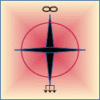Intelligence: The Evolution of Problem-Solving and Creativity
Introduction: The Rise of Intelligence
Intelligence is the cornerstone of adaptation and innovation, enabling life to not only survive but thrive in an ever-changing world. From instinctive cellular responses to the sophisticated artificial intelligence systems of the Digital Age, the development of intelligence has been a defining thread in the story of progress. This chapter explores the evolution of intelligence, tracing its growth across the eras of human and natural history.
Single Cell Era: The Dawn of Instinctual Intelligence
In the earliest stages of life, intelligence was rudimentary and instinct-driven:
Survival Instincts: Single-celled organisms relied on basic instinctual responses to locate nutrients and avoid threats.
Cellular Processes: Intricate biochemical pathways enabled cells to maintain balance and adapt to environmental changes.
This era marked the beginning of intelligence as an adaptive mechanism for survival.
Primitive Era: The Development of Problem-Solving
In the primitive era, intelligence advanced with the evolution of multicellular organisms and early human ancestors:
Problem-Solving: Early humans and animals displayed instinctual problem-solving, such as tool use and strategic hunting.
Learned Responses: Repeated interactions with the environment led to behavioral adaptations based on experience.
Senses and Information: Enhanced sensory input allowed for more nuanced recognition of opportunities and threats.
This period laid the groundwork for intelligence as a dynamic and learned process.
Awareness Era: The Emergence of Abstract Thought
The awareness era saw a quantum leap in cognitive abilities:
Symbolic Thought: Early humans began creating symbolic representations through cave paintings and carvings.
Abstract Thinking: The ability to conceptualize ideas beyond the immediate environment emerged.
Pattern Recognition: Observing patterns in nature, such as celestial movements, led to early predictions and planning.
Cause and Effect Cognizance: Humans connected actions to outcomes, fostering a deeper understanding of their environment.
Creativity: This era also gave rise to storytelling, art, and innovation as outlets for intellectual expression.
This period heralded the transition from reactive intelligence to proactive understanding and creativity.
Medieval Era: Scholarly Advancements
In the medieval period, intelligence was further refined through structured inquiry:
Scholasticism: The systematic study of philosophy, theology, and logic became prominent.
Experimentation: Observations and practical experiments began to challenge established doctrines.
This era saw intelligence grow through disciplined thought and exploration, laying the foundation for future scientific endeavors.
Agricultural Age: Practical Intelligence
The agricultural age emphasized practical applications of intelligence:
Written Records: The development of writing systems enabled the documentation and transmission of knowledge.
Weather Forecasting: Observation of weather patterns improved agricultural planning.
Innovations in Farming: Advancements in tools, techniques, and resource management increased agricultural efficiency.
Chemistry: Early chemical practices, such as fermentation and metallurgy, expanded humanity’s control over natural processes.
This era marked a shift toward intelligence applied to societal and resource-based challenges.
Enlightenment Era: The Philosophical Expansion
The Enlightenment ushered in a period of intellectual flourishing:
Philosophical Systems: Thinkers developed frameworks for ethics, governance, and scientific reasoning, emphasizing logic and evidence.
This era was a turning point, as intelligence moved from practical problem-solving to the exploration of abstract concepts and universal truths.
Industrial Age: Mechanized and Theoretical Intelligence
The Industrial Age marked a new phase in intellectual development:
Scientific Theories: Foundational theories in physics, chemistry, and biology were formulated, revolutionizing our understanding of the natural world
Scientific Awareness: The application of systematic observation and experimentation became the standard for advancing knowledge.
Mechanized Problem-Solving: The invention of machines and systems automated complex tasks, augmenting human intelligence.
This period solidified the role of intelligence in shaping modern industry and infrastructure.
Digital Age: Artificial Intelligence and Beyond
The Digital Age represents the pinnacle of intelligence, blending human ingenuity with machine learning:
AI Systems: Artificial intelligence performs tasks requiring logic, pattern recognition, and decision-making at unprecedented scales.
Data Awareness: Massive datasets are analyzed to generate insights and predictions, driving innovation across industries.
Mechanized Problem-Solving: The invention of machines and systems automated complex tasks, augmenting human intelligence.
This era exemplifies the fusion of human and artificial intelligence, unlocking possibilities unimaginable in prior ages.
